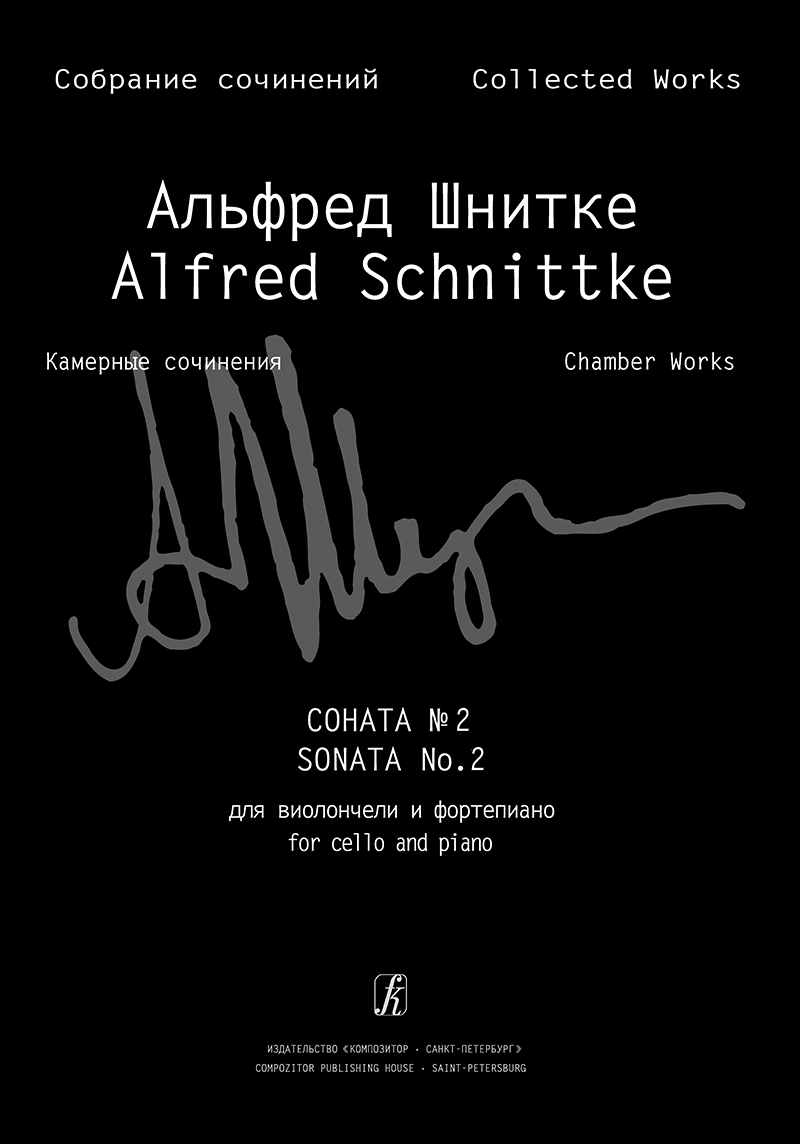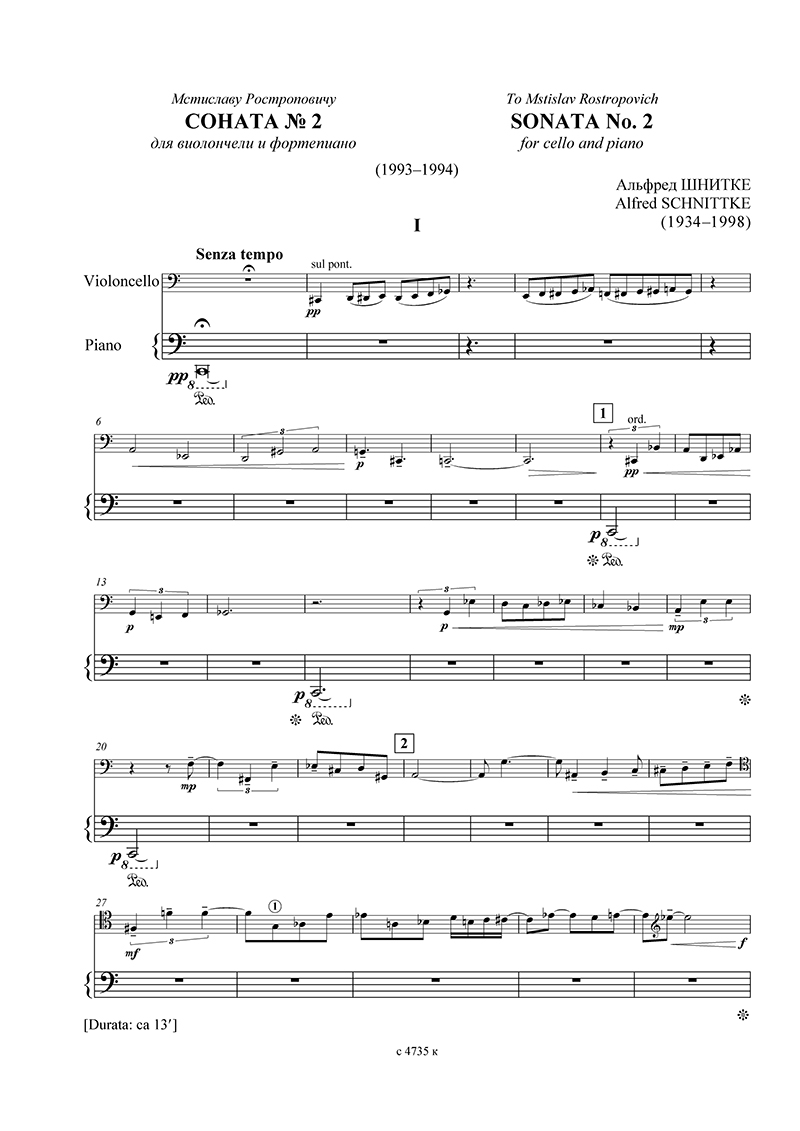
Schnittke A. Sonata No 2 for cello and piano (Coll. Works. S. 6, Vol. 2, P. 2)
- Author:
- Schnittke A.
- Author (full):
- Alfred Schnittke
- Title (full):
- Collected Works. Critical edition based on the composer's archive materials. Series 6. Chamber Works. Volume 2. Works for cello and piano and for solo cello. Part 2. Sonata No 2 for cello and piano. Piano score and part
- Number of pages:
- 32+12
The publication of Alfred Schnittke’s Collected Works is a joint project of the Compozitor Publishing House · Saint-Petersburg and the Alfred Schnittke Archive at Goldsmiths College, University of London. This critical edition is intended for performers, scholars and music lovers interested in Schnittke and his music. Its main purpose is to provide them with access to his scores, which are not readily available in Russia or elsewhere. All the scores have been checked against Schnittke’s manuscripts and existing publications of his music аnd have been edited by leading performers who collaborated with the composer.
Preface
The Second Sonata for cello and piano, composed in 1994 for Mstislav Rostropovich, is one of the works written by Schnittke shortly before the onset of his last and fatal illness. The character of the Second Sonata, in five movements, is much more introspective and ascetic than that of the First (1978). Piano textures are extremely economical, ensuring that the cello has the predominant role. The first movement is a cello monologue against the background of a bell-like C in the low register of the piano. The composer’s indication “Senza tempo” emphasises the improvisational nature of the music, unfolding in a wide range of dynamics (from pianissimo to fortissimo) and across a broad range (over four octaves) in the cello part.
The dramatic second movement engages the cello and piano in greater interaction, including much counterpoint. From the start, one hears rhythmic pulsations, a quasi-improvisational figuration on the note C across four octaves. The number of strokes increases from one to twelve, a symbolic representation of the passing of time. Later the music becomes more metrical, but continues to sound improvisatory, the line now based on all the notes of the chromatic scale, scattered across different octaves.
In the third movement the cello presents a melody made up of the same notes as appear in the chords of the piano part. Here, Schnittke’s approach resembles that of Josef Matthias Hauer (1883-1959), whose music he became interested in and whose early works are also based on short cells appearing in both horizontal and vertical form. The effect of this technique is striking: the cello theme is given an additional acoustic resonance through its harmonic support from the piano.
The fourth part in the cycle performs the function of a scherzo, frenetic like the second movement, but shorter and more restless and aggressive. (The second and fourth movements here have similar functions to those of Schnittke’s Second Cello Concerto.)
The fifth and final movement dissolves into silence, its music sparse and with very few notes.
The first performance of the Sonata, given by Mstislav Rostropovich and Irina Schnittke, took place on 17 November 1994 at the Barbican Centre (London). On 21-22 November 1996 Rostropovich made the first recording, with the St Petersburg pianist Igor Uryash and sound engineer V. Ryabenko, for EMI.
Alexander Ivashkin
2014
- Author
- Schnittke A.
- Author (full)
- Alfred Schnittke
- Title (full)
- Collected Works. Critical edition based on the composer's archive materials. Series 6. Chamber Works. Volume 2. Works for cello and piano and for solo cello. Part 2. Sonata No 2 for cello and piano. Piano score and part
- Number of pages
- 32+12

